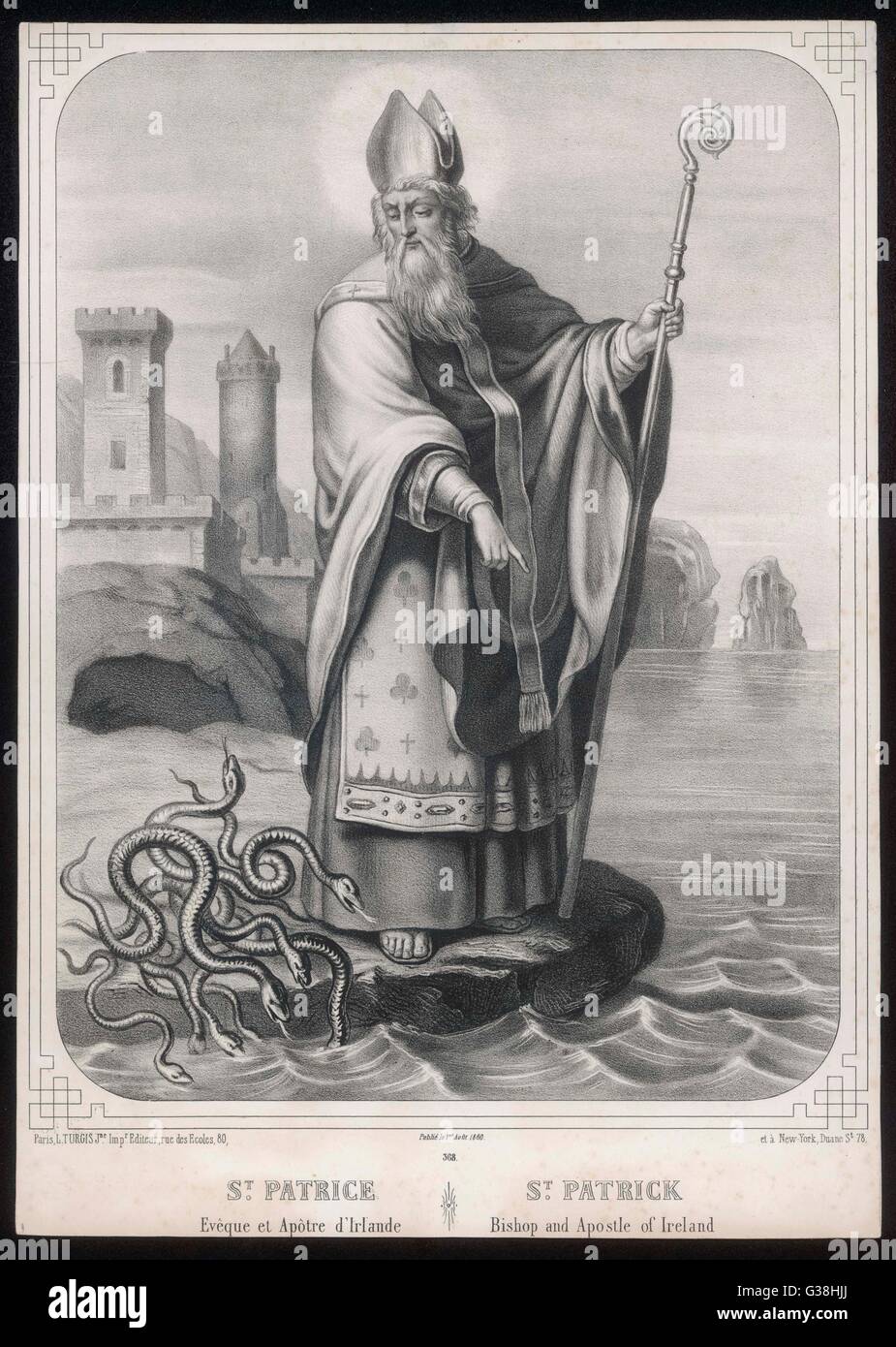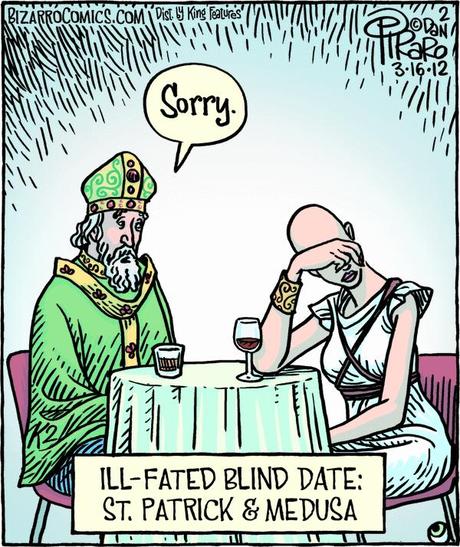Gallery
Photos from events, contest for the best costume, videos from master classes.
 | |
 |  |
 |  |
 |  |
 |  |
 |  |
On March 17 every year, St Patrick’s Day commemorates the life of St Patrick, a fifth-century Romano-British bishop. From him introducing Christianity to the Irish to driving all the snakes A prayer card illustration showing Saint Patrick driving the snakes out of Ireland, published circa 1900 (Image: Popperfoto via Getty Images/Getty Images). Scientists and historians argue that this has nothing to do with St Patrick's intervention, though. Did St. Patrick Really Drive Away Paganism? One of the reasons he's so famous is because he supposedly drove the snakes out of Ireland, and was even credited with a miracle for this. There's a popular theory that the serpent was actually a metaphor for the early Pagan faiths of Ireland. How St. Patrick’s Day Began After his death on March 17th, 461 AD , Patrick became Ireland’s patron saint , and his legacy lived on. Over time, people honoured him with feasts and celebrations , and what started as a religious holiday eventually became the global celebration of Irish culture we know today! The Best Irish Songs And The Best Irish Films Of All Time For Paddy’s Day; 8 Ways That We Celebrate St. Patrick’s Day In Ireland; The Most Notable St. Patrick’s Day Traditions In Ireland; 17 Tasty St. Patrick’s Day Cocktails To Whip Up At Home; How To Say Happy St. Patrick’s Day In Irish; 5 St. Patrick’s Day Prayers And Blessings Every March 17th, the world turns green in celebration of St. Patrick’s Day—a vibrant tribute to Ireland’s patron saint. Parades march through Dublin, shamrocks adorn lapels, and pints of Guinness flow freely. But as the confetti settles in 2025, a quieter curiosity emerges. Who was St. Patrick beyond the festivities? What hidden stories linger beneath Legend tells it that in addition to introducing Christianity to Ireland, St. Patrick banished all the snakes from the Emerald Isle, chasing them into the sea from atop a cliff where he had The Saint and the Serpents: Unraveling the Legend of St. Patrick and the Snakes. The saint most famously associated with driving snakes out of Ireland is St. Patrick.Legend claims he banished all serpents from the Emerald Isle, chasing them into the sea after they attacked him during a 40-day fast. Frequently Asked Questions (FAQs) About St. Patrick and the Snakes 1. Was St. Patrick Irish? Actually, no. St. Patrick was born in Roman Britain, likely in Scotland. His parents were Romans living in Britain. He was kidnapped and brought to Ireland as a slave during his youth. 2. What was St. Patrick’s original name? The article does not have Most scholars agree: the “snakes” Patrick drove out were not animals—but ancient beliefs. In pre-Christian Ireland, the serpent was a symbol of spiritual power—used by druids, pagans, and mystics of the old ways. The myth of Patrick banishing snakes likely represents his mission to displace paganism and convert Ireland to Christianity. 2. Did St. Patrick really drive the snakes out of Ireland? The story of St. Patrick driving the snakes out of Ireland is symbolic, not literal. Ireland has never had native snakes. The “snakes” are widely interpreted as a metaphor for paganism and the suppression of indigenous beliefs. 3. The Hidden Symbolism of Snakes in Celtic Lore on St. Patrick’s Day. Let’s be honest: St. Patrick’s Day is all about green beer, shamrocks, and people pinching you for not wearing enough green. But beyond the rowdy parades and rivers dyed an unnatural shade of emerald, there’s a hidden, ancient symbol writhing beneath the surface—snakes. According to legend, the patron saint of Ireland chased the slithering reptiles into the sea after they began attacking him during a 40-day fast he undertook on top of a hill. (Who was St. An Image depicting St Patrick casting the snakes into the sea. Image source. Death and Legacy. Saint Patrick’s death is recorded in the Annals of the Kingdom of Ireland in the year 493 AD when he is said to have been 122 years old, although many historians believe he died in the year 461 AD. The date of his death was March 17, the day that is But St. Patrick did drive the metaphorical snakes of evil and paganism out of Ireland, converting an entire people to Catholicism. That is why the legend persists and why, while probably not literally accurate, it is spiritually true. Credit: Chronicle/ Alamy Stock Photo St. Patrick Didn’t Drive Snakes Out of Ireland. The story of St. Patrick driving all the snakes out of Ireland is one of the most famous legends about the historical figure, but there’s just one problem: Ireland never had any snakes to begin with. source: “Did St. Patrick Really Drive Snakes Out of Ireland?” ( National Geographic ) The credit for the Emerald Isle’s lack of serpents should not be given to Patrick, standing on a mountaintop (Croagh Patrick), waving his magical staff (more on that later), uttering some variation of “I banish thee, all venomous and viperous things St. Patrick’s Day has changed substantially over the years since its founding in the 1600s. Stemming from traditions heavily rooted in religion, St. Patrick’s Day originated on March 17th to celebrate St. Patrick, the Patron Saint of Ireland and Engineers, who was renowned for spreading Christianity throughout Ireland and whose legend has become deeply intertwined [] The “Snakes” of Ireland. The most famous legend about St. Patrick is that he drove the snakes out of Ireland. However, as any natural historian will tell you, Ireland never had snakes to begin with. So what could this story really mean? The “snakes” were of course a metaphor for the Druids and the native pagan traditions of Ireland. Every year on March 17, people around the world celebrate St. Patrick’s Day, honoring the patron saint of Ireland. But what started as a religious feast has evolved into a vibrant, global celebration of Irish culture.
Articles and news, personal stories, interviews with experts.
Photos from events, contest for the best costume, videos from master classes.
 | |
 |  |
 |  |
 |  |
 |  |
 |  |